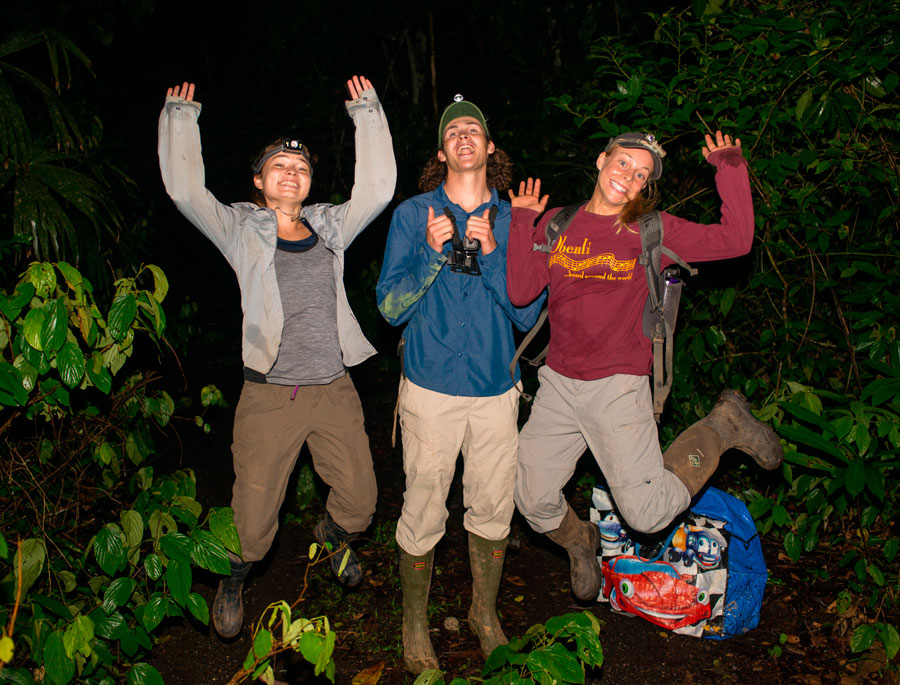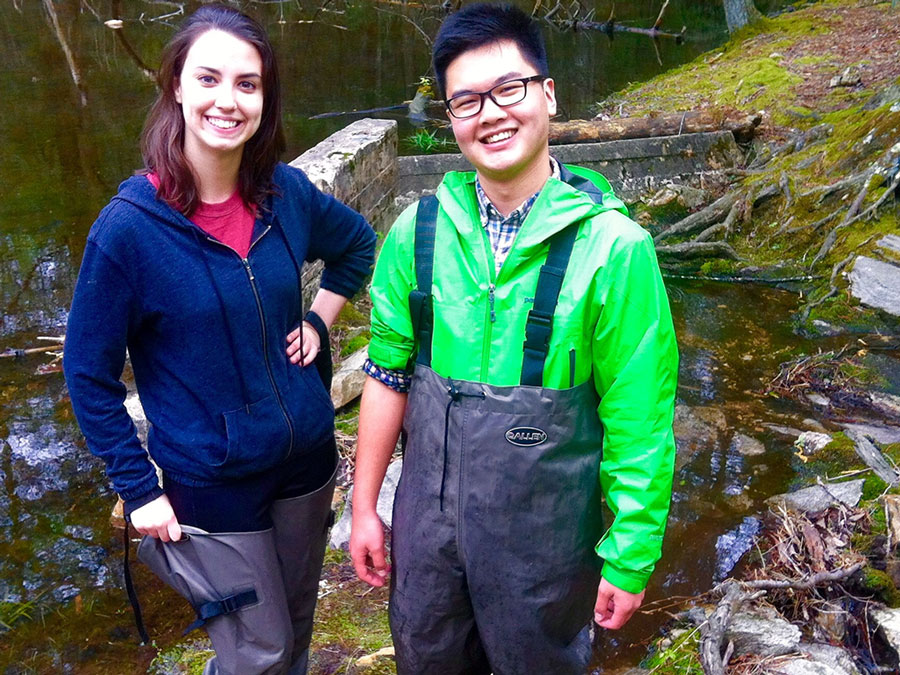
Health Sciences Major, Sarah Smith ’18 presented “The dynamics of predation and parasitism risk in mixed-species choruses”at the 19th Undergraduate Research Symposium in the Chemical and Biological Sciences, University of Maryland Baltimore County. This is work that Sarah, along with Biology Majors Meghan Brady ’17 and Brendan Dula ’16, conducted during the summer of 2016 at the Smithsonian Tropical Research Institute in Panama, to decipher the effects of population density and call structure variation on heterospecific risk transfer in mixed frog choruses.

Huanjia Zhang ’17 and Elizabeth Hill ’17 received second place for their poster at the 19th Undergraduate Research Symposium in the Chemical and Biological Sciences, University of Maryland Baltimore County. This was the second time they presented their work on a salamander embryo-algal symbiosis, which has been supported by the Alberte Fund and HHMI over the past two summers. The poster: "More than just friends: Revealing the specificity of host-symbiont relationship in Algal and Ambystoma embryo endosymbiosis through co-culture experiment,” is the culmination of two years worth of work on culturing different species of embryos and algae to see how they interact.
Kaelea Composto ’19, a Biochemistry & Molecular Biology major, presented “Identification and Characterization of CRISPR-Cas Systems in Serratia spp.” Using bioinformatic sequences, Kaelea has been mining the DNA sequences from whole genome analyses to identify novel CRISPR-Cas systems in bacteria. She’s become very proficient in a variety of DNA sequence analysis tools and comparative databases!
Celine Erkey ’19, a Chemistry major, and Caleb Hellman ’19, a Biology Major, presented “Erwinia amylovora Bacteriophage: Loving Your Enemy’s Enemy." As alumni of the 2015-16 Phage Hunters class, Celine and Caleb have been looking for bacteriophage – viruses that only infect bacteria – that specifically target the bacterial pathogen that causes fire blight disease in apples. They have been characterizing the phage by different molecular and culture techniques. As part of the class, they tested their phage in apple seedling models and were able to limit fire blight symptoms! Celine and Caleb won joint 1st Place in the Environmental Microbiology Undergraduate Research Poster Session.
Jacob Marogi ’19, a Biochemistry & Molecular Biology major, presented “The Function of CRISPR-Cas Systems in Salmonella.” CRISPRs are repeat regions that exist in bacterial genomes – they have been shown to protect bacteria from attack and subsequent death by bacteriophage. Jacob has been studying the role that these CRISPRs play in Salmonella and considering their evolution in different Salmonella strains. Jacob won 2nd Place in the Molecular Microbiology Undergraduate Research Poster Session.
Cameron Thompson ’19, a Biochemistry & Molecular Biology major, presented “CRISPR-SeroSeq: A New Tool for Salmonella Serotyping.” To complete his project, Cameron got familiar with chicken poop – he spent time during the summer in Pennsylvanian poultry houses collecting samples to search for Salmonella. He then used specific molecular DNA signatures that are found in Salmonella – CRISPRs – and some fancy bioinformatics approaches to identify the different types of Salmonella. Cameron won joint 1st Place in the Environmental Microbiology Undergraduate Research Poster Session.
Dorothy Vosik ’19, a Biology major, presented “Uncovering Salmonella Strain Diversity Using CRISPR-MVLST.” When people get sick with certain pathogens (including Salmonella), the Public Health Department has to identify them in a rapid and accurate manner, which is important to limiting an outbreak. Dorothy has been partnering with the Pennsylvania Department of Health to use a new technique - CRISPR–MVLST - to precisely identifySalmonella strains from patients.